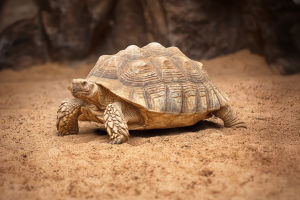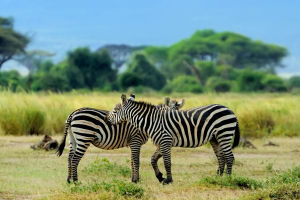Hey Lykkers! Have you ever wondered about sea turtles and how they live in the vast ocean? Sea turtles are reptiles that primarily live in the sea. But here's something interesting: even though they spend most of their lives in the water, they are closely related to land turtles.
Today, we're diving into the world of sea turtles to discover how they're related to their land cousins, how many types exist, and some fascinating facts that you might not know!
Sea Turtles Are Reptiles
Let's start with the basics: sea turtles belong to the class of animals known as reptiles. This means they share common traits with other reptiles like lizards and snakes. Sea turtles are cold-blooded (or "ectothermic"), meaning their body temperature changes based on their surroundings. They also lay eggs, have scales (or had them at some point in their evolutionary history), and breathe through lungs. Oh, and just like other reptiles, sea turtles have a heart with three or four chambers. Pretty cool, right?
Sea Turtles Are Related to Land Turtles
You might not realize this, but sea turtles are actually related to land turtles (like tortoises and box turtles). Both belong to the order Testudines, which means they share some similar features. For instance, both types of turtles have a shell. This shell is an adaptation that's formed from their ribs and spine, offering protection. Unlike land turtles, though, sea turtles can't retract into their shells for safety, and they have specialized flipper-like limbs instead of regular legs. They also don't have teeth, but their jaws are covered with a tough, horn-like material.
Sea Turtles Are Built for Swimming
Sea turtles are amazing swimmers, and their bodies are designed to help them navigate the ocean. They have a streamlined shell, which reduces water resistance and helps them move more efficiently. Their lower shell is called the plastron, and it's flatter compared to land turtles. Sea turtles also have paddle-like flippers, which make them excellent at swimming. However, these flippers aren't much help on land—sea turtles can't walk on land like we do, and they can only move slowly when they're out of the water. They also breathe air, so they must come to the surface to catch their breath, which puts them at risk of colliding with boats.
There Are Seven Species of Sea Turtles
Sea turtles come in seven different species, each with its own unique characteristics. These species include the leatherback turtle, loggerhead, hawksbill, olive ridley, green turtle, Kemp's ridley, and flatback sea turtle. Some of these turtles can grow up to 6 feet in length! The largest species is the leatherback turtle, which can weigh up to 2,000 pounds and has particularly developed front limbs. The smallest species is Kemp's ridley, which is only about 2 feet long. Sea turtles can vary widely in size, but they all share one thing in common: tough, scaly shells.
Sea Turtles Lay Eggs on Land
Did you know that sea turtles lay their eggs on land? Just like land turtles, sea turtles are oviparous, meaning they lay eggs. Female sea turtles return to the beaches where they were born to lay their eggs. This is a fascinating phenomenon—despite the fact that the beach might look completely different after 30 years! To lay their eggs, female sea turtles crawl onto the beach, dig a deep hole in the sand (sometimes more than a foot deep), and then deposit their eggs. Afterward, they cover the nest with sand and return to the ocean. During nesting season, a single turtle may lay multiple nests of eggs.
Why Do Female Sea Turtles Return to the Same Beach?
One of the most amazing things about sea turtles is their ability to return to the exact beach where they were born to lay their own eggs. This behavior is called natal homing. Despite the years and changes to the coastline, these turtles instinctively find their way back to their birthplace to continue the circle of life. This incredible navigation ability is still a mystery to scientists, but it's one of nature's greatest wonders.
In Conclusion: Sea Turtles Are Truly Remarkable
So, Lykkers, the next time you think about sea turtles, you'll know just how fascinating these creatures truly are. From their incredible swimming abilities and unique body structure to their fascinating reproductive behaviors, sea turtles are more than just ocean wanderers. They're a symbol of resilience and mystery. Let's continue to appreciate these amazing creatures and work to protect their habitats for future generations. What do you think about sea turtles? Have you ever seen one in the wild? Let us know in the comments!


